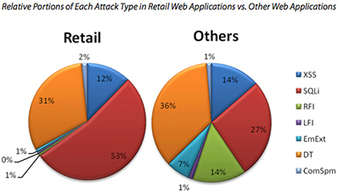Retailers suffer twice as many SQL injection attacks as other industries, according to Imperva. Additionally, these attacks were more intens...
The US is the number one source of web attacks: The majority of requests and attackers originated in the United States, Western European countries, China and Brazil.
“We believe that, with the current threat landscape, organizations can no longer afford to take an every-man-for-himself approach to security,” said Shulman. “This report demonstrates that the automation and scale of attacks leave a large footprint that can be better addressed by looking at data gathered from a large set of potential victims. Thus it is important to rely on one’s peers to acquire intelligence on malicious sources and apply this intelligence in real time.”



 Your new post is loading...
Your new post is loading...










The site says it will publish a full post mortem on the security incident in the near future, probably next week, and that users should follow @official_php on Twitter for updates.